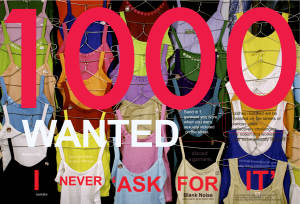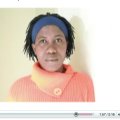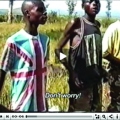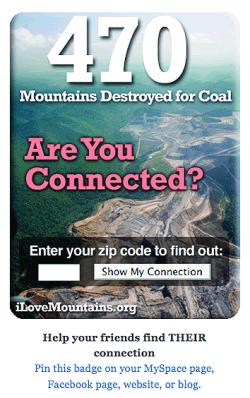TACTIC 4: VIDEO
NO ONE IS LISTENING
amplify personal stories
download this tactic card (pdf 832kb)
watch the full video
THIS TACTIC IS USEFUL WHEN PEOPLE AFFECTED BY THE ISSUE ARE NOT BEING CONSULTED, AND AS A WAY TO GIVE AN ISSUE DEPTH THAT RESONATES WITH THE TARGET AUDIENCE
EXAMPLES FROM THE VIDEO
|
|
By women who have experienced violence This project shares personal experiences of surviving violence using digital storytelling, an approach which allows people to use animation, photos, music, and live video to tell first-person stories. These were then distributed to human rights advocates, policy-makers, and service and aid workers.
TOOLS USED: video cameras, digital animation, digital video editing software, YouTube, blip.tv.
LINKS TO LEARN MORE: |
|
|
By women against urban street harassment in India This project explores the issue of sexual harassment of women by combining personal storytelling with public actions. Women tell their stories by sending garments that they wore when harassed, blog together during a 'blogathon' about what happened to them, post photographs of places where they were harassed, and tell stories of how they reacted to street harassment.
TOOLS USED: Blogspot.com, Facebook, Flickr.
LINKS TO LEARN MORE: |
|
|
By Ajedi-Ka PES/Child Soldier Project and WITNESS This documentary film represents the personal stories of child soldiers. After the release of the video, the international criminal court brought charges against those in the Congolese military who had enlisted child soldiers.
TOOLS USED: video cameras, digital video editing software, website.
LINKS TO LEARN MORE: |
TACTIC 4: PLAN YOUR ACTION
NO ONE IS LISTENING
amplify personal stories
download this tactic card (pdf 832kb)

BLANK NOISE
Plan your action
- In the videos of the lives of child soldiers in the Congo, the same story was told in two ways: one story was for local people, to raise awareness, and one was to influence the courts. Think ahead about how the raw material you gather could be crafted to tell different stories for different target audiences.
- For Blank Noise, collecting people's stories and amplifying them on one website created a sense of community for those who contributed. What incentive is there for the people you work with and/or your community to tell a story? How will you support people to stay connected to each other?
- Personal stories can be very revealing. If you ask people to share their stories, you have a responsibility to protect their privacy and safety. When telling a personal story could introduce risks to someone, discuss these risks in detail with them. You may need to conceal people’s identities by excluding their name, location, image, and voice.
- Working with people to tell their stories is in itself a process. Ajedi Ka in the Congo spent months getting to know the children and soldiers before using the video camera. Think about how you will build trust and help people tell their own stories.
- Telling stories online is one form of collective action, but what else might you ask your contributors to do? Will they help lead a campaign in their local area, promote the initiative, create content?
Do it yourselfAsk
- What is your role in the community about which you want to share stories: who are you to them and how will they see you?
- What reward will this community or group get from opening up their personal experiences in front of a larger audience, and what risks might this entail?
- Will you share these personal stories in a closed setting, like a workshop, or will you publish them online for a wide audience who may also republish them in a different context?
- What are the potential privacy and security risks surrounding these stories?
- Is there a timely issue that you can connect the stories to?
- Will the stories you gather be relevant for different audiences, for example, both policy-makers and members of the community?
Different ways you can do this
- Stories can be told with objects as well as words. Blank Noise posted photos of clothing that women were wearing when they were harassed, and also used them in street demonstrations.
- People can tell a personal story anonymously by mobile phone, either with a voice call or a text message. These stories can then be sent from their phones to your campaign, or uploaded directly from their phones, and shared on one website.
- Tagging, or labeling a piece of online content with a keyword, can let you aggregate many stories on one website. You can ask people to upload photos, videos, and blog posts on different websites and all use the same unique tag for these posts. On your website, you can display all the stories with that tag.
- Many people in different regions can each contribute a short video or sequence of photos to make one longer video. This allows people who do not know how to edit video or add music and effects to collaborate over distance.
- For videos where participants cannot show their faces on film, using animation or puppetry, if appropriate for the tone of the video, can still feel very personal.
|
FEATURED TOOL Creating a mash-up site: We the Women’s website pulls many people’s stories from Facebook, Flickr, YouTube and Google News in to one space. If you want to put together a simple website, you can use a free blog, like WordPress, and add content from other websites so that your site updates automatically when new stories are added elsewhere. If you are not working on sensitive issues where content must be moderated before being published, a mash-up site can bring many voices together quickly and simply.
|
TIPS AREEJ KHAN OF 'WE, THE WOMEN,' ON KEEPING IT LOCAL: "If I had the chance, I’d have launched the initiative when I was in Saudi Arabia. I’m from there, but some people suggested that I was an outsider because I was living in the United States at the time I began the project. I’ll be going back to Saudi Arabia to continue it."
SALLY-JEAN SHACKLETON OF WOMEN’SNET, ON PERSONAL STORIES: "This is about people taking ownership over their own stories. It also means that the media is something that we don’t dictate. The media comes from people themselves."
SAM GREGORY OF WITNESS, ON RISK: "In a digital era, anyone can see a piece of footage, and it just takes one person to make a copy and it could be up online. We encourage people to really think through and understand the potential consequences and to make an informed choice." |
TACTIC 4: CASE STUDY
NO ONE IS LISTENING
amplify personal stories
download this tactic card (pdf 832kb)

HTTP://WWW.N7NUDRIVE.COM/
Case Study
| TITLE: WHO: WHERE: WEBSITE: |
We the Women Areej Khan, project director Women in Saudi Arabia and Saudi women abroad N7nuDrive - We the Women |
DESCRIPTION
To draw attention to laws banning women from driving cars in Saudi Arabia, Areej Khan, a Saudi artist and graphic designer living in the US, created the 'We the Women' campaign. The project asks women to respond to the question, "To drive or not drive?" by writing their answers on stickers that they can post in public spaces. Areej asked participants to photograph their stickers and email or post the photos to its Flickr photo group and on its Facebook page. "People preferred to post the stickers anonymously, by email to me, and then I posted them", Areej said. The project received news media attention in Saudi Arabia and in the US. "Most of the people participating on the Facebook page are against women driving," said Areej. "There’s back and forth and debate on the group. I had to be prepared that I can’t control what this is at the end. It’s about finding a solution as community, not what I think or am attached to." Although the project gets many comments opposing women driving in Saudi Arabia, Arjeej finds that, "a lot of people say they think that will change soon, because of the voice given to women by projects like this."
| TOOLS USED: | Facebook, Flickr, YouTube. Stickers can be downloaded from Flickr and printed. The website used HTML, JavaScript. |
| REACH: | Over 2000 people participated on the Facebook page in the first three months of the project (April-June 2009), with 25 sticker designs submitted. Most of the sticker images were sent from Saudi Arabia. |
| RESOURCES: | One volunteer staffs the project. A local printer in Saudi Arabia made 3000 stickers for the project for free. |
| TIME: | Seven months to learn web-design, plan and execute. After the launch, it took only two days for the first participant to post a photo. |
LEVEL Of DIFFICULTY: 2 out of 5
COST: USD$2000 (web hosting, sticker printing)
LINKS TO LEARN MORE:



